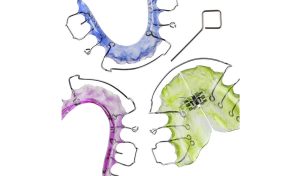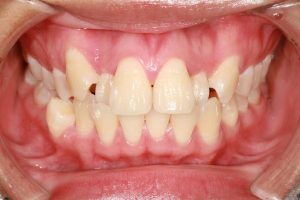What Is a Palatal Expander and Why Is It Needed?

What is a palatal expander?
A palatal expander is anorthodontic tool that expands the roof of the mouth through gentle pressure, as well as the upper jaw. This can help straighten teeth, correct any jaw or teeth problems that may already be existent, and help with overall jaw development.
Palatal expanders work best when there are changes in the teeth, which is why it works best with children. Through gentle pressure on permanent teeth, this tool helps leave room for teeth to grow still while also helping to make sure these teeth grow in the correct way. Because palatal expanders help work with changes in jaws and teeth through aging, this is one of the main ways they are different from retainers (which don’t account for this, really).
Expanding the upper jaw differs depending on the age of the patient, as adults are going to need different procedures than children will. For those under the age of sixteen, a palatal expander is the best choice for expanding the upper jaw. A rapid palatal expander (RPE) is attached to the upper molars of the patient, by either using a cemented band or by bonding. This can then be widened by orthodontist over time by turning a screw in the middle of the whole appliance throughout the time the palatal expander is attached to the patient, at different and multiple times. Through this procedure, outward pressure is then placed on the patient’s upper jaw, which can then cause extra bone to grow between these two halves of the patient’s jaw. This is what is needed to expand the jaw and eventually increase the width of the jaw entirely.
This process is very uncomfortable, though not that painful. Depending on the patient and age, some patients may feel more pain than others. Many liken the pain to the pain that is experienced during other dental work, such as braces application. While the procedure is uncomfortable, it is much less painful than the pain and issues that could come later on in life if these problems aren’t fixed.
Common problems palatal expanders can help fix

- Teeth crowding: Teeth crowding can happen when there isn’t enough space for adult teeth to grow, which leaves them unable to develop in the correct positions. The lack of space in the jaw is the primary cause for this, which can be fixed through a palatal expander. The only other way to repair teeth crowding would be through teeth extraction, which wouldn’t be needed if a palatal expander is used.
- Posterior crossbite: Posterior crossbite is what happens when the upper half of the teeth become too close to the back of the lower half of the teeth. Because of this, the upper teeth then seem to be “biting” the lower teeth. Palatal expanders can help fix this.
- Impacted teeth: If there isn’t a lot of space along the jaw for new adult teeth to grow, these teeth may become blocked by the other crowded teeth already growing. This can also be fixed with a palatal expander so that the situation doesn’t worsen over time.
- Breathing problems: Some people can actually experience breathing problems if a high plate and if a narrow arc blocks their air passages.
While these are the most common problems that palatal expanders can help fix, these aren’t the only ones. To learn if you or your child can benefit from palatal expanders, make sure to make an appointment with your orthodontist to learn more about specific information regarding your own health and teeth.
When are palatal expanders most beneficial?
 For the most part, palatal expanders are most beneficial and successful when they are usedon children under the age of sixteen. Palatal expanders help with jaw issues and crossbites, which should always be treated on patients who are young (though no younger than the age of five), so as to make sure no facial deformities or issues arise from these problems. The longer one waits for these issues to be corrected, the harder it may be to even correct.
For the most part, palatal expanders are most beneficial and successful when they are usedon children under the age of sixteen. Palatal expanders help with jaw issues and crossbites, which should always be treated on patients who are young (though no younger than the age of five), so as to make sure no facial deformities or issues arise from these problems. The longer one waits for these issues to be corrected, the harder it may be to even correct.
For adults who are looking for ways to fix their crossbites, they may want to look into dental expansion instead of palatal expansion. For the most part, jaw surgery may be the primary treatment and orthodontist prescribes for an adult who is looking for a way to expand their jaw. Therefore, it’s imperative to help younger children fix their jaws and potential crossbites as young as possible, so the idea of surgery never truly could happen in their future.
While palatal expanders are incredibly beneficial and helpful for those who are experiencing these problems, it is also quite a pricey technique to use. The overall price changes from patient to patient, depending on just what the patient needs and how crowded their teeth are overall, or how much their jaw needs to change.
Palatal expanders seem to be scary to some, but that’s just because they don’t really know what the technique and procedure are all about. To be able to fix the upper jaw and help crowded teeth at a young age is ideal, especially once you realize that the only way to fix upper jaw issues once you’re an adult is to go through surgery. There is obviously a lot of information to digest when talking about palatal expanders and it’s best to speak with your orthodontist to get the best information specific to you and your own care.
